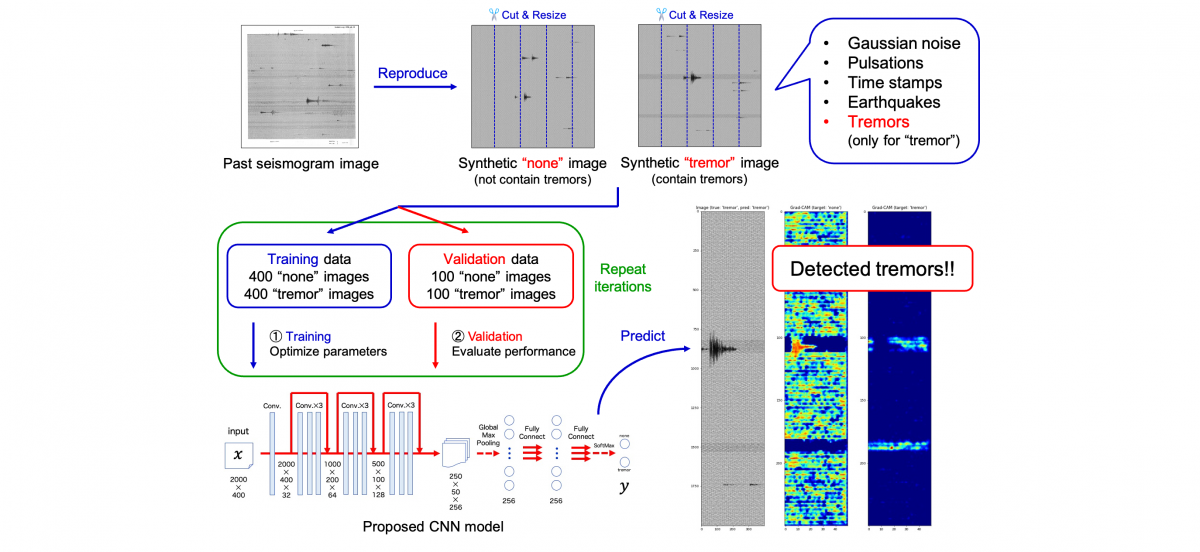Ryosuke Kaneko, Hiromichi Nagao, Shin-ichi Ito, Kazushige Obara, Hiroshi Tsuruoka
Convolutional neural network to detect deep low-frequency tremors from seismic waveform images
Lecture Notes in Computer Science, Vol. 12705, pp. 31-43, doi:10.1007/978-3-030-75015-2_4, 2021.
The establishment of dense seismometer arrays in Japan approximately 20 years ago led to the discovery of deep low-frequency tremors, which were weak oscillations categorized as slow earthquakes. Currently, only digital data of the recent 20 years are available for studying tremors. As many studies have indicated the relations between tremors and large earthquakes, it is important to investigate tremors that occurred before establishing the dense seismometer arrays. Past seismic observation system used more than 50 years ago drew waveforms continuously on paper wrapped on a drum. The tremor detection methods used for current digital data cannot be applied directly to past seismograms. Also, detecting tremors by visual inspection of experts is unrealistic considering the past seismograms are numerous. Therefore, we use a convolutional neural network (CNN), a deep-learning model that exhibits high performance for image recognition, aiming to detect evidence of tremors from the past seismogram images. ERI has been scanning the paper records at the observatories of the Wakayama station, which makes the development of CNN effective. Training a CNN from scratch with real data polluted by a variety of noises may hinder the model construction and hyperparameter tuning. Thus, we conducted numerical experiments to train a CNN with synthetic images generated according to the past seismograms. The results show that the trained model can learn tremor features and correctly determine the presence of tremors in the seismic waveforms. In addition, the heatmaps visualizing the model predictions clearly indicate the tremor location on each image. These suggest that a CNN can be a promising alternative for effective tremor detection compared to individual waveform extraction through digitization. Based on the finding from the experiments, we will conduct CNN training with real data and eventually apply the trained model to the past seismograms.
Figure. We generated synthetic images according to the past seismograms. Half of the synthetic images (“none” image) does not contain tremors and the rest (“tremor” image) contains. We applied coarse graining to them and split the images into training and validation datasets for model learning. The bottom-right heatmap shows that the trained model can detect two tremor waveforms correctly from a “tremor” image, indicated by the band-like patterns.


